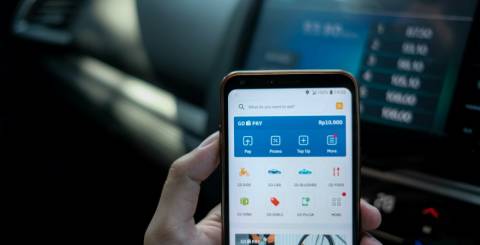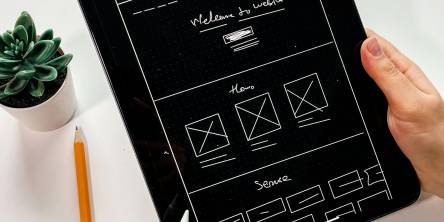Key Features for a Fintech App

Financial technology, or FinTech, has evolved rapidly, and fintech apps are gaining popularity. These apps offer services ranging from mobile banking to investments and have changed the way users view and interact with financial services. But, as this technology becomes more popular and competitive, it has become increasingly important for fintech apps to offer features that stand out to provide better user experience, including attractive UI, stronger security measures etc.
In this article, we will list out the must-have features of fintech apps that would encourage people to use these apps for their financial management.
Essential Features For Fintech Mobile Application
User-friendly design:
A user-friendly design is probably one of the most important features of a fintech app. The design feature is what attracts users and keeps them engaged with the app. Besides the aesthetic part, a user-friendly design offers an intuitive and seamless experience. It can include a clean menu layout, simple navigation options, and a flow that can transition logically from one part of the app to another. A user-friendly design should focus on the user’s perspective to ensure that app navigation can be done with a minimum number of clicks. A user-friendly app design helps reduce the learning curve for users and encourages them to use the app consistently.
Security management:
Strong security measures are one of the most critical features of a fintech app. A fintech app would require strong encryption, two-factor authentication, biometric login, etc, to protect sensitive financial data from hacks and breaches. These features offer extra layers of security that discourage unauthorized access to the fintech app and user accounts. This can be further reinforced by consistently offering security updates that can counter new threats. The app can also be designed to guide users about security measures and safe practices, which can help build and increase user trust.
Seamless integration:
Seamless integration of the fintech app with other financial systems and tools, like bank accounts, investment portfolios, credit card services, etc., is a must-have, essential feature of a fintech app. Such integration allows users to view and manage their financial holdings from one unified window or platform, thus increasing convenience and efficiency. The integration also allows real-time app updates and lets users accurately track their financial information. The Integration of a fintech app with other financial systems and platforms increases the utility of the fintech app, making it an essential tool for financial management.
Customer support:
Customer support is one of the most fundamental features of a fintech app. This feature bridges the gap between the users and the technology that powers fintech apps. Effective customer support can help in answering complex queries and help in developing trust and confidence in using the app. It can also provide app developers and financial companies with insights into user behavior and their requirements, which can be used to improve financial offerings. A great customer support feature can set one fintech app apart from other competitors while encouraging loyalty and retention.
Account management:
The account management feature of the fintech app enables users to have control over their financial data, allowing them to track and manage their activities within the app. This feature lets users set usage limits, view transactions, set budgets, schedule payments and invest from the single interface within the app. It also lets users take control over security by letting them manage access using two-factor authentication. It also gives options to users to receive notifications in real-time that can alert users of any unusual activity. The feature gives users a comprehensive view of their finances and allows them to make informed decisions.
Customization:
Customization lets users change the functionality of the app according to their own personal preferences, which increases user interaction and engagement with the app. It can allow users to set financial goals, create personalized budgets, and even set up alerts for transactions. The customization feature also lets the app offer financial advice that can be based on user preferences. The app can also be customized by arranging the features in any particular way the users would prefer, giving it a very personalized feel.
Payment gateways:
A payment gateway lets users make payments, transfer funds, and perform other financial transactions from the app, and it is one of the must-have features in a fintech app. This feature ensures that transactions are processed securely and quickly and can be used for various payment methods and different currencies. A payment gateway feature is integrated with the banking systems and provides secure methods for safeguarding user data. It also offers convenience to users by letting them save credit or debit card details for easier and faster checkouts.
Final Words
Today, there is a well-defined need for a feature-rich fintech app, which can be fulfilled by a financial mobile app development company. Features like a user-friendly app design, strong security management, customer support, account management, etc., can increase user engagement with the app and make them loyal customers. These features make the fintech apps efficient offer easy accessibility to the users, and transform these apps into personalized financial advisors. As the fintech market evolves, developers can make use of the current trends and technologies to make the fintech app more relevant and secure.
Similar Articles
Incompatibility is a common issue in software development and can happen for many reasons, such as different versions, data format inconsistency, or contrasting process logic. Integration testing is the process that helps find these inconsistencies between different software modules.
Mobile technology is changing rapidly, and the quality and performance of mobile applications are of paramount importance. Testing the mobile applications to ensure that they perform as per the design is equally important. This testing can be achieved by using some strategies that can play a critical role in improving the testing of mobile applications
In an environment where the speed of technological advancement is breathtaking, maintaining a leading edge in the mobile app development landscape is essential. As we transition into 2024, new and innovative trends are making their mark, altering the methodologies we apply in the creation of mobile apps
In the dynamic realm of mobile app development, Continuous Integration (CI) and Continuous Deployment (CD) have become crucial practices to ensure the efficient and reliable delivery of high-quality applications. CI/CD pipelines play a pivotal role in automating the integration of changes from various developers and deploying applications to production environments.
Mobiles and by extension, mobile apps are the basis for the modern mobile device and take it beyond a mere communication tool. In today’s world, information has to be available at our fingertips and people want mobile applications to do instantly what websites used to do before, give information and details instantly, anytime & anywhere
In the ever-evolving landscape of app development, embracing innovation is not just a choice but a necessity. Enter serverless architecture, a transformative paradigm reshaping how we approach app development.
EdTech developers leverage modern technology to create immersive and engaging learning apps. A successful product relies on solid technology, including front-end frameworks like React.js, offering efficient development and incorporating cutting-edge features like gamification and voice recognition for a standout user experience in the education industry
Internet of Things, or IoT, is a fast-growing concept that promises a transformation in how we live and work. It enables us to connect and control smart devices such as wearables, medical devices, sensors & more using mobile apps. IoT has impacted many aspects of our lives, and some of the most notable are home building, logistics, healthcare, and more.
Mobile app development has become an essential part of the digital ecosystem as mobile devices have become more prevalent than desktops or laptops. Regarding mobile app development, two popular approaches are Xamarin and native mobile app development.









